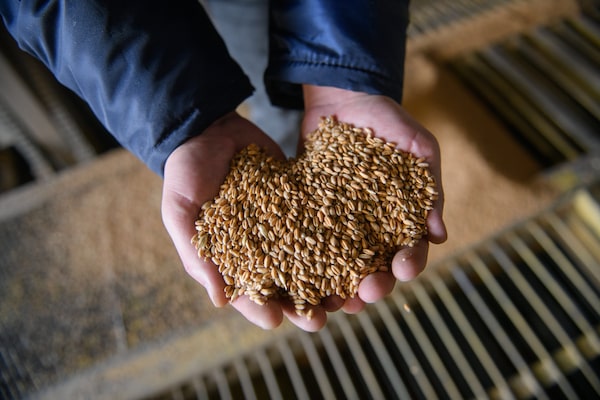
A worker holds handfuls of grain at a river terminal in Buzhke, a village in Ukraine's Mykolaiv region. The agribusiness giant that runs the terminal, Nibulon, suffered heavily when the Russian invasion targeted the infrastructure that Ukraine uses to feed itself and export goods.Olga Ivashchenko/The Globe and Mail
For Dymtro Barinov, the deputy CEO of the Ukrainian Sea Ports Authority, the view from his office overlooking the harbour of Odesa was immensely gratifying. He saw cargo ships, lots of them, loading Ukrainian grain and other crops.
The ships would soon head south, hugging the Romanian and Bulgarian coasts before reaching Turkey’s Bosporus Strait, the gateway to the Mediterranean. Navigation freedom was theirs.
“The Russian war fleet is afraid to come to this point in the Black Sea,” he told The Globe and Mail earlier this month. “I am optimistic for 2024. We continue to supply agricultural products to the world.”
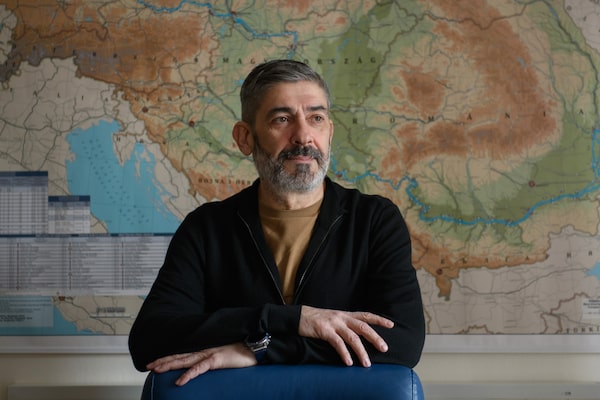
Dymtro Barinov is deputy CEO of the Ukrainian Sea Ports Authority, which has spent the past two years adapting to the dangers of Russian military action in the Black Sea.Olga Ivashchenko/The Globe and Mail

Grain shipping routes on the Black Sea
Does not allow port calls
UKRAINE
Allows port calls with
conditions/restrictions
Mariupol
Berdiansk
Olbia
Kherson
Odesa
Skadovsk
Ust-
Dunaisk
Sea of Azov
CRIMEA
(Annexed by
Russia in 2014)
Reni
Izmail
RUSSIA
ROMANIA
New coastal
route
Former route
Black Sea
BULGARIA
Bosporus Strait
TURKEY
Istanbul
THE GLOBE AND MAIL, SOURCE: BBC; WILHELMSEN.COM

Grain shipping routes on the Black Sea
Does not allow port calls
UKRAINE
Allows port calls with
conditions/restrictions
Mariupol
Berdiansk
Olbia
Kherson
Odesa
Skadovsk
Sea of Azov
Ust-
Dunaisk
CRIMEA
(Annexed by
Russia in 2014)
Reni
RUSSIA
Izmail
ROMANIA
New coastal
route
Former route
Black Sea
BULGARIA
Bosporus Strait
TURKEY
Istanbul
THE GLOBE AND MAIL, SOURCE: BBC; WILHELMSEN.COM

Grain shipping routes on the Black Sea
Does not allow port calls
UKRAINE
Allows port calls with
conditions/restrictions
Mariupol
Berdiansk
Olbia
Pivdennyi
Kherson
Chornomorsk
Skadovsk
Odesa
Bilhorod-Dnistrovskyi
Sea of Azov
Ust-
Dunaisk
CRIMEA
(Annexed by
Russia in 2014)
RUSSIA
Reni
Izmail
ROMANIA
New coastal
route
Former route
BULGARIA
Black Sea
Bosporus Strait
TURKEY
Istanbul
THE GLOBE AND MAIL, SOURCE: BBC; WILHELMSEN.COM
Cargo volumes from Ukraine’s deep-water ports are running at about two-thirds of their preinvasion levels – a remarkable, even heroic, achievement after the near destruction of some of the country’s biggest river and sea ports, the violent death of the boss of Ukraine’s top agribusiness company, the collapse of a United Nations-brokered initiative to secure a safe shipping corridor, and daring attacks on the Russian navy that sent its warships fleeing to the eastern side of the Black Sea.
At its lowest point, in 2022, a blockade of the sea lanes and the damage to the ports threatened to sink the country’s export-focused agricultural industry. Nibulon, one of the largest Ukrainian agribusinesses and the only one with its own fleet and shipyard, almost went bankrupt.
“Without access to the seas, it is impossible to support our agriculture products,” said Taras Vysotskyi, Ukraine’s first deputy minister of agrarian policy and food.
Drive anywhere in Ukraine and you will realize the country is one enormous farm. It is Europe’s biggest country (if you exclude Russia, whose land mass is largely in Asia) and is mostly flat. Agricultural products – sunflower oil, wheat, barley, corn, rapeseed – are its top exports. In 2021, the year before Russia’s full-scale invasion, they totalled almost US$28-billion, according to the U.S. Department of Agriculture, accounting for more than 40 per cent of overall exports. Agriculture comprised about 10 per cent of prewar GDP – and far higher if related logistics businesses, such as railways and trucking, were included.
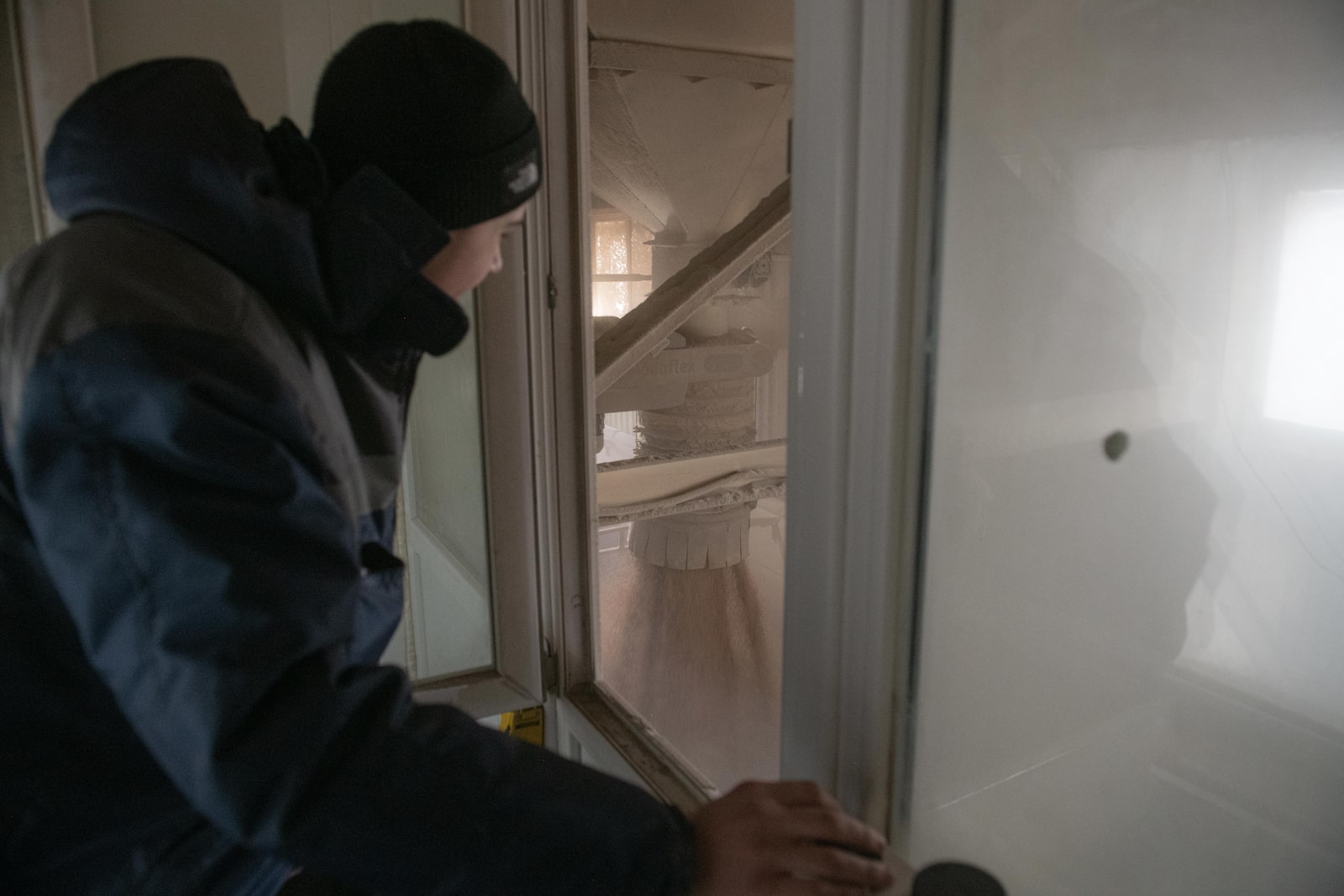
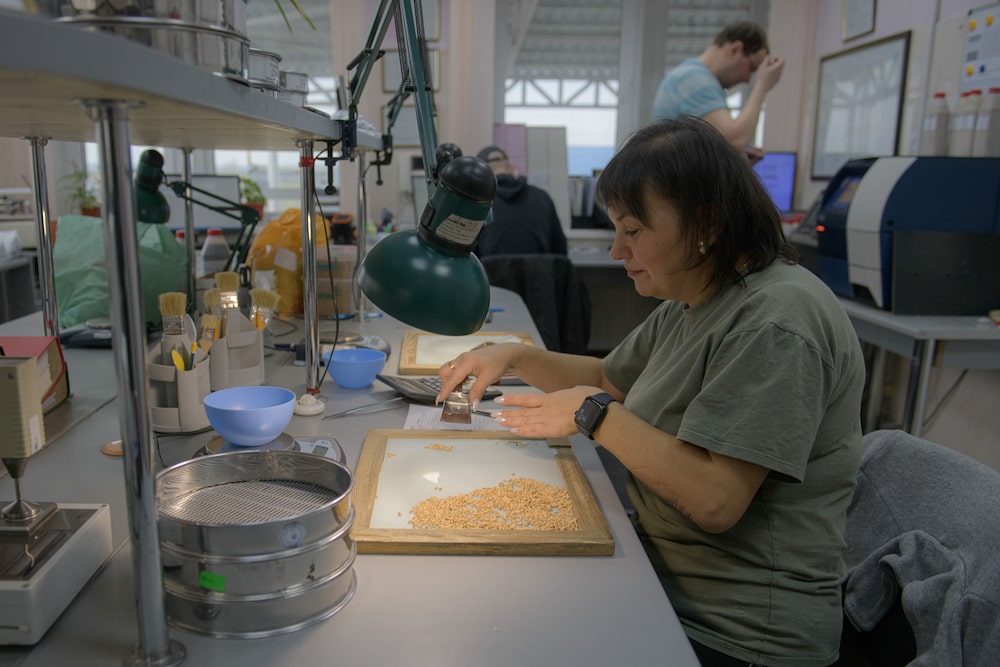
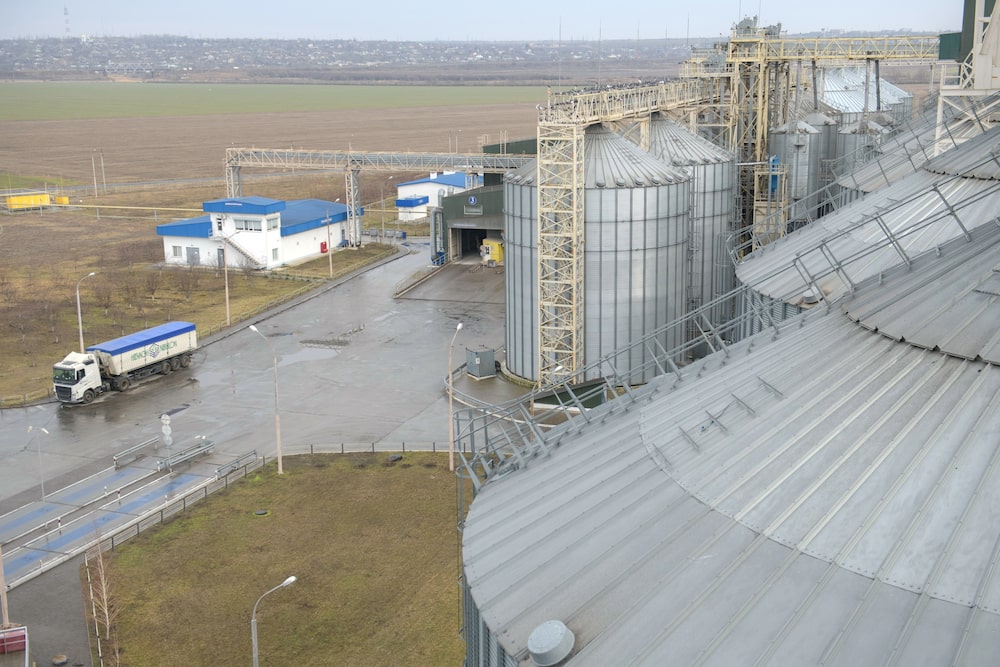
None of this would work without access to the sea and river ports. Russian President Vladimir Putin evidently determined that the fastest way to cripple the Ukrainian economy was to damage or destroy the agricultural industry, including the ports.
The campaign began in 2014, when Russia invaded and annexed Crimea, eliminating five of Ukraine’s 18 ports. In the invasion that started in February, 2022, Russia seized three seaports, which today remain in Russian hands. Two others, Mykolaiv and Kherson, the major river ports in the south, between Odesa and Crimea, ceased to function after heavy attacks. Today, only six ports are operating – three deep-water ports in and around Odesa and three much smaller ones on the Danube.
The Russians compounded the damage with a Black Sea blockade that stopped almost all shipping from the few functioning ports between March and June, 2022. Grain from the last harvest piled up in warehouses and began to rot. Grain prices soared around the world, and a few poor countries heavily reliant on Ukrainian wheat, including Egypt and Lebanon, experienced crippling food inflation that their governments feared would trigger social unrest.
In Istanbul, a Russian submarine sails through the Bosphorus en route to the Black Sea on Feb. 13, 2022, in the weeks leading up to the start of the war.Yoruk Isik/Reuters
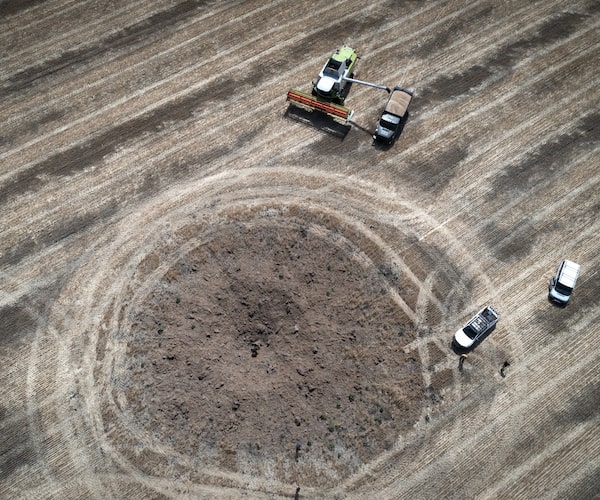
A farmer navigates around a crater left by a Russian rocket in Ukraine's Dnipropetrovsk region in July, 2022.Efrem Lukatsky/The Associated Press
Mr. Vysotskyi’s office has estimated that damage to the agricultural sector caused directly by the war, including destroyed infrastructure and agricultural equipment stolen by the Russians, amounts to US$12-billion. That rises to US$20-billion, he said, if indirect losses such as lost production in the occupied territories are included.
Nibulon suffered the most. “The early part of the war was a disaster for our company,” said Volodymyr Slavinskyi, the company’s trade director. “Exports went to almost zero for a month. The Russians used food as a weapon.”
About 40 per cent of the company’s properties, including five enormous silo complexes, were lost to the Russians and remain in occupied territory. Its vast operations in the besieged river-port city of Mykolaiv stopped. A month after the war started, the company rushed to send agricultural products by rail and truck to the Polish border, an expensive and slow process. It eventually transferred as many shipments as it could to the Danube ports, which it quickly expanded, but overall exports were still meagre compared with prewar levels.
The vanished revenues meant the company could no longer pay its international creditors. Then, tragedy struck on the night of July 31, 2022, when Russian missiles slammed into the house of the company’s founder and chief executive, Oleksiy Vadatursky, killing him and his wife, Rayisa. Ukrainian President Volodymyr Zelensky called the attack the “premeditated murder [of] one of the most important agricultural entrepreneurs in the country,” and many Ukrainians agreed that the 74-year-old’s death was an assassination.
The bad news did not stop there. Nibulon’s newly built warehouse on the Danube was destroyed by Russian drones. Between the mobilization of more than 600 of its draft-age male employees, those who became war refugees by fleeing the country and workers trapped in occupied territories, the company’s work force has dropped to 3,500 from a prewar level of 6,500.
As agricultural prices climbed, the governments of food-importing countries in Africa, the Middle East and elsewhere grew panicky. The UN came to the rescue and negotiated a deal among Ukraine, Russia and Turkey that would create a safe corridor for shipping, though the Russians demanded inspections to verify the cargoes. On the first day of August, 2022, the Razoni, a Sierra Leonean-registered bulk carrier laden with corn, became the first ship to sail under the new agreement. “Odesa port had been silent until then,” Mr. Barinov said. “It was so good to hear the noise of a working port again.”
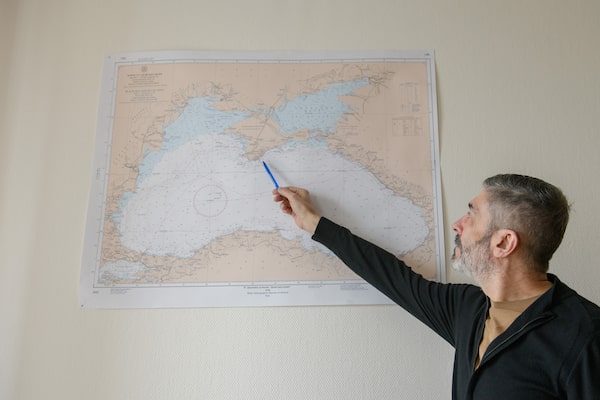
At his office in Odesa, Mr. Barinov from the Ukrainian Sea Ports Authority points on a map to the seas around Crimea, a Ukrainian peninsula that Russia annexed in 2014.Olga Ivashchenko/The Globe and Mail
On Aug. 3, 2022, the cargo ship Razoni sails off Kilyos, Turkey, with Ukrainian grain. Officials from a UN-established body came aboard to inspect it.Mehmet Emin Caliskan/Reuters; Turkish Defence Ministry via REUTERS
The shipping corridor functioned fairly well for a while, and hard-pressed Ukrainian farmers were finding export markets for most of their crops. The problems began when Russia slowed down its ship inspections, creating bottlenecks.
Each side blamed the other for not holding up its end of the bargain, and the initiative collapsed last July, after some 33 million tonnes of grain hit the waves over the course of a year, about half the prewar levels.
Shortly after the grain deal died, Russian missiles and drones hammered the port of Odesa and others nearby. The UN warned that “targeting infrastructure that facilitates the export of food to the rest of the world could be life-threatening to millions of people who need access to affordable food.”
The collapse of the safe-corridor initiative sent grain exports plummeting again. At that point, Ukraine had to make a choice: Invent a safe corridor of its own – as safe as could be in a war – or rely on the expanded Danube ports, plus trains and trucks heading to the EU border, to maintain export flows, albeit at highly reduced levels. The latter option could have inflicted further damage on the agricultural industry, with some of the big players, such as Nibulon and grain exporter Kernel, already on the brink of default.
So Ukraine chose to create a grain corridor of its own. But wouldn’t it be attacked? This is where clever design, using Black Sea depth and contour maps, and the Ukrainian military and its intelligence arms played crucial roles.
The new corridor ran along Ukraine’s southwest Black Sea coast, hugging the territorial waters of Romania and Bulgaria, both NATO countries, and onward to Turkey. Bathymetric maps – which show the location and depth of underwater formations – were used to plot a route that allows ships with deep draughts to avoid running aground.

Lieutenant-Commander Dmytro Pletenchuk spoke with The Globe about the challenge of mines in the Black Sea.Olga Ivashchenko/The Globe and Mail
The main problem was clearing the mines that had been dropped into the sea in and near the shipping corridor – and are possibly still being dropped, according to Western intelligence reports. The Russians devised a cover to blame Ukraine for any mines that damaged ships. “The Russians used Ukrainian mines that they captured in 2014, when they invaded Crimea,” Dmytro Pletenchuk, a lieutenant-commander based in Odesa with Ukraine’s navy, told The Globe.
In late December, a Panamanian-flagged cargo ship hit a mine while it was steaming toward Ukraine’s Danube ports, sparking a fire on its upper decks but otherwise leaving the ship intact. In the previous month, a Russian missile struck the superstructure of a cargo ship arriving in Odesa, injuring some crew members and killing the Ukrainian pilot.
But otherwise, there have been relatively few attacks on ships using the corridor, which opened in August, one month after the Russians withdrew from the UN-sponsored grain deal. That’s partly because the Ukrainian military has had amazing success in pushing Russia’s mighty Black Sea fleet to the eastern side of the sea, where it is a far lesser threat to the shipping corridor.
Sea-drone footage, shared on social media in August, 2023, purports to show the Russian ship Olenegorsky Gornyak being disabled near Novorossiysk, Russia.Video obtained by Reuters
Ukrainian sea drones, like these ones seen in December, 2023, have been an important part of the war effort.Brendan Hoffman/The New York Times
Ukraine, which has no warships in its arsenal, used missiles, drones and special forces teams to harass, damage and often destroy Russian vessels. Ukraine’s Center for Defence Strategies says 25 enemy ships and boats have been lost since the start of the invasion and a dozen more, including a submarine, have been damaged, taking out nearly a third of the Black Sea fleet.
The biggest target was the Moskva, the missile cruiser that was the flagship of the fleet. Ukraine said it was hit by two Neptune cruise missiles. It was the largest ship sunk in wartime since the Second World War.
Ukrainian commando raids have also struck Russian naval infrastructure on Ukraine’s coast. In one particularly daring raid, about 20 commandos used jet skis to reach the Crimean coast, where they damaged an electronic warfare station. They scored a PR victory by planting a Ukrainian flag on the former Ukrainian peninsula.
In October, James Heappey, Britain’s Minister of State for the Armed Forces, said he saw a “functional defeat” for Russia’s Black Sea fleet as it withdrew to safer waters. But Russia did not stage a total retreat and paid the price on Feb. 1, when Ukrainian naval drones sank the Ivanovets missile corvette in a bay in western Crimea. Overnight on Wednesday, Ukraine said its naval drones sank the Cesar Kunikov, a 113-metre-long amphibious landing ship that typically carries about 90 crew members.
Ukraine’s surviving ports are far from being back to normal. Odesa’s container business remains moribund, since the cost of insuring individual containers in a war zone is exorbitant. Some of the port infrastructure has not been repaired, and drone or missile attacks are a constant threat, as are mines. But the good news far outweighs the bad. Yuriy Vaskov, the deputy infrastructure minister, said cargo volumes from the three operating deep-water ports are at 60 per cent to 70 per cent of prewar levels and the corridor that hugs the Ukrainian, Romanian and Bulgarian coasts is “safe.”
Perhaps no one is happier than Finance Minister Sergii Marchenko, who feared that the destruction of the ports and other agricultural infrastructure could wreck the economy, which lost 30 per cent of GDP in the first year of the war. “The opening of the grain corridor means there will be less economic risk for Ukraine,” he told The Globe. “It will generate trade and investment and taxes.”
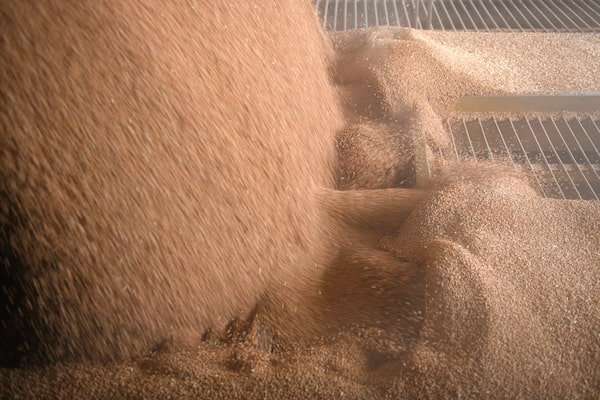
Grain is unloaded at the Nibulon terminal. As the war with Russia continues, Ukraine hopes to find better ways to safely export its agricultural products.Olga Ivashchenko/The Globe and Mail
War in Ukraine: More from The Globe and Mail
When Ksenia Koldin was separated from her brother in a Russian-occupied area of Kharkiv, she went on a mission to get him out of the network of “summer camps” Russia has built to assimilate Ukrainian youth. The Globe’s Mark MacKinnon shares their story. Subscribe for more episodes.
How cheap drones are transforming Ukraine’s war against Russia
Ukraine’s oligarchs are no longer considered above the law
Making peace with Russia now would be surrender, Ukrainian winner of Nobel Peace Prize says
Kyiv’s mayor worries Ukraine under Zelensky is getting more autocratic
 Eric Reguly
Eric Reguly